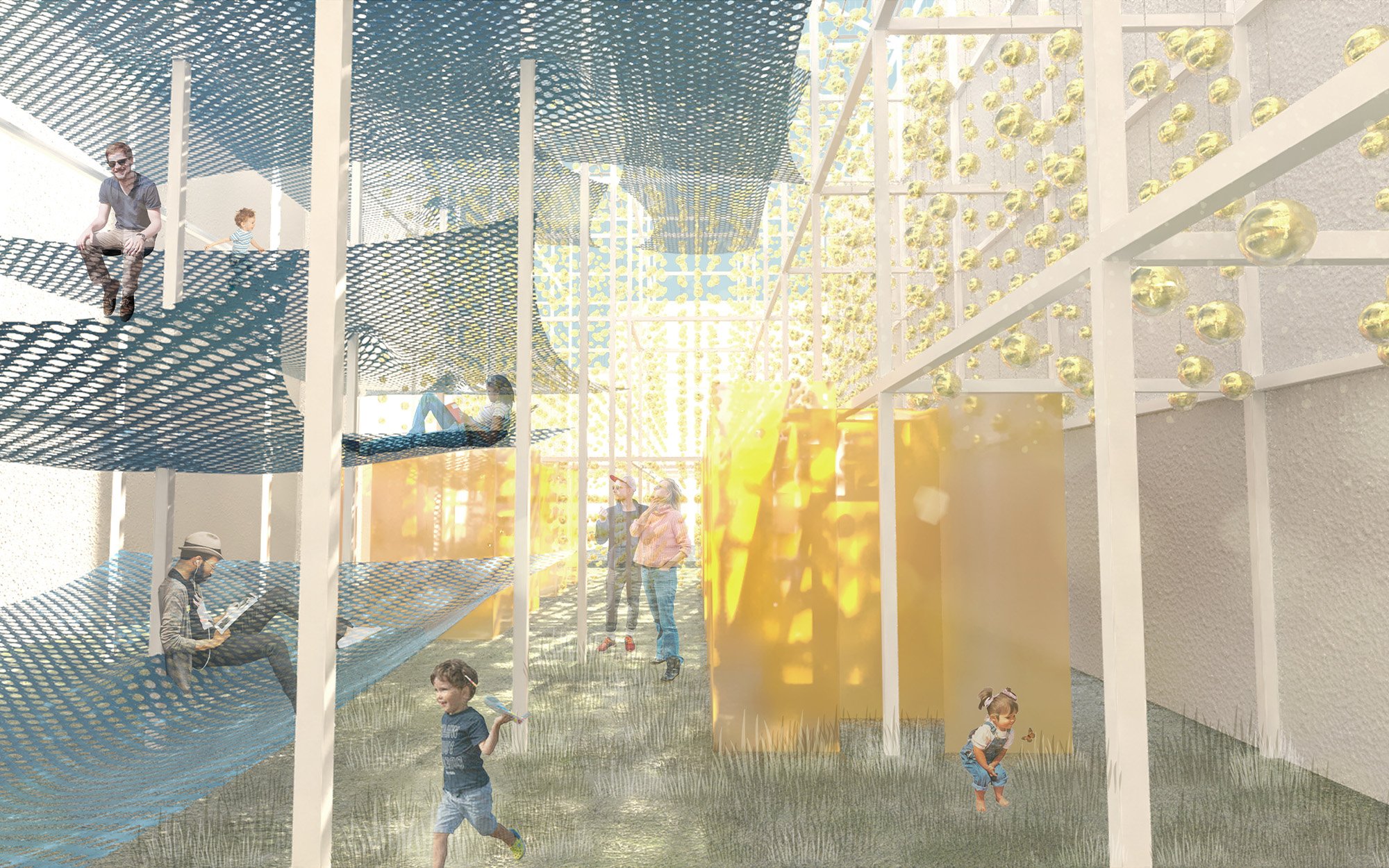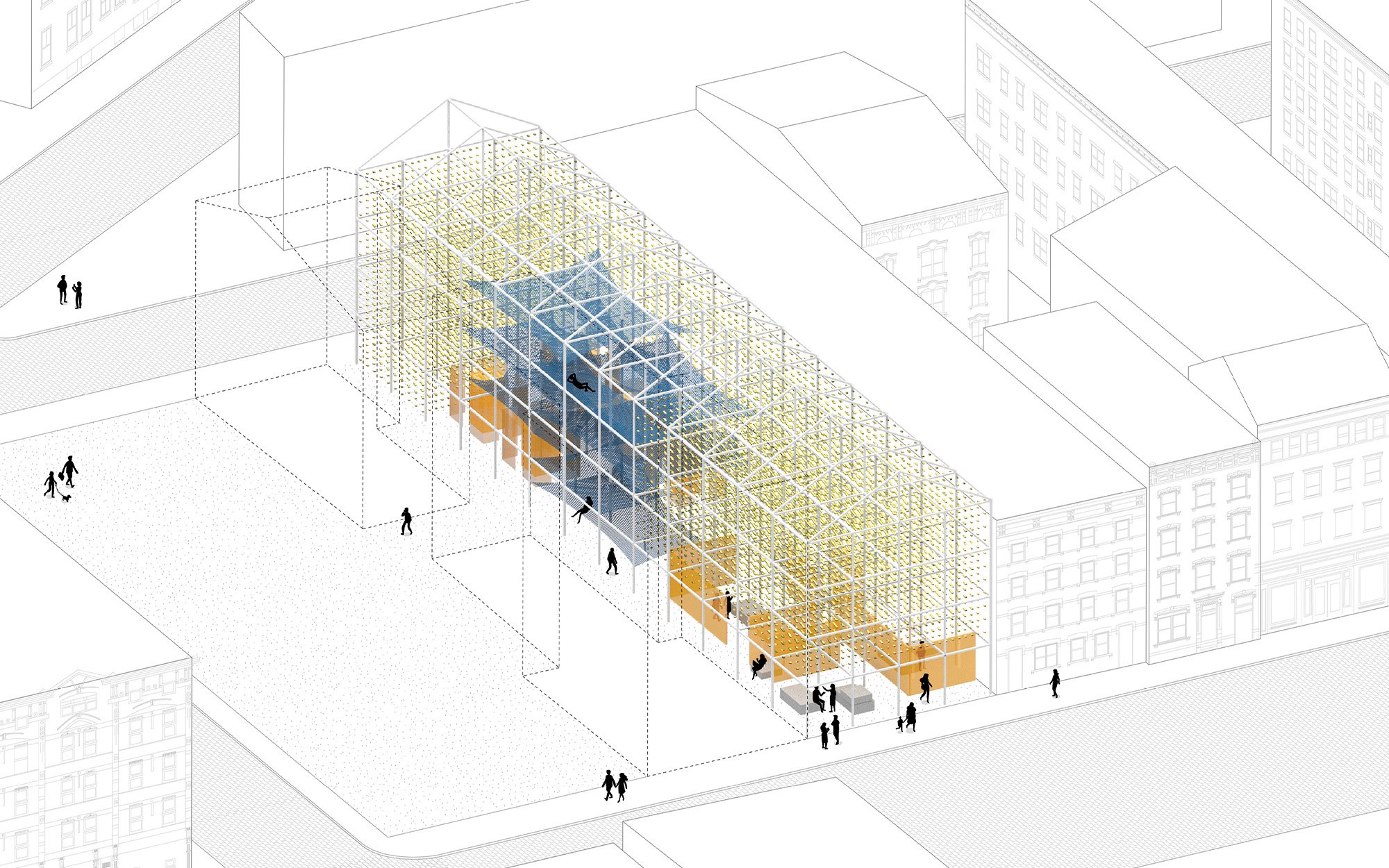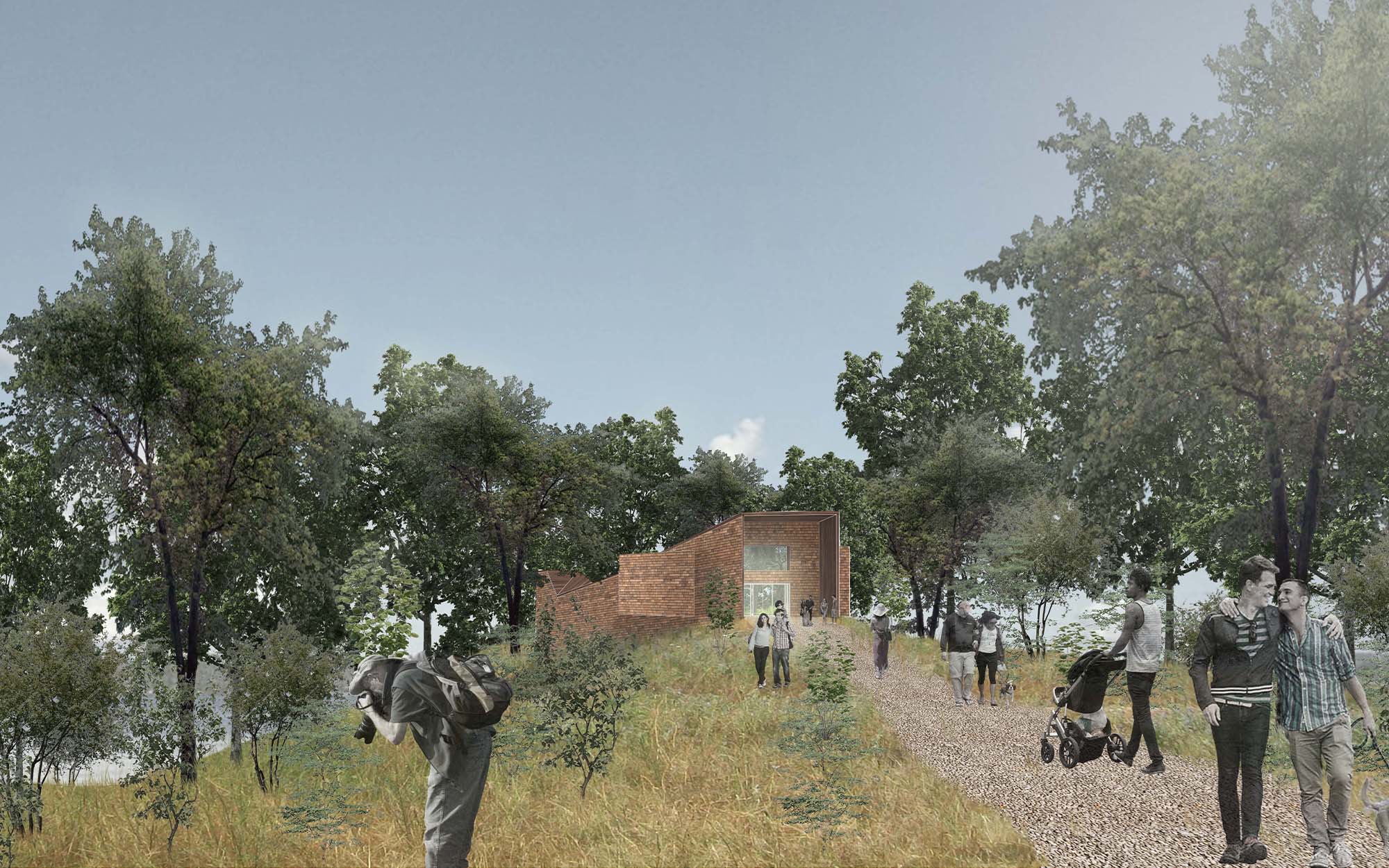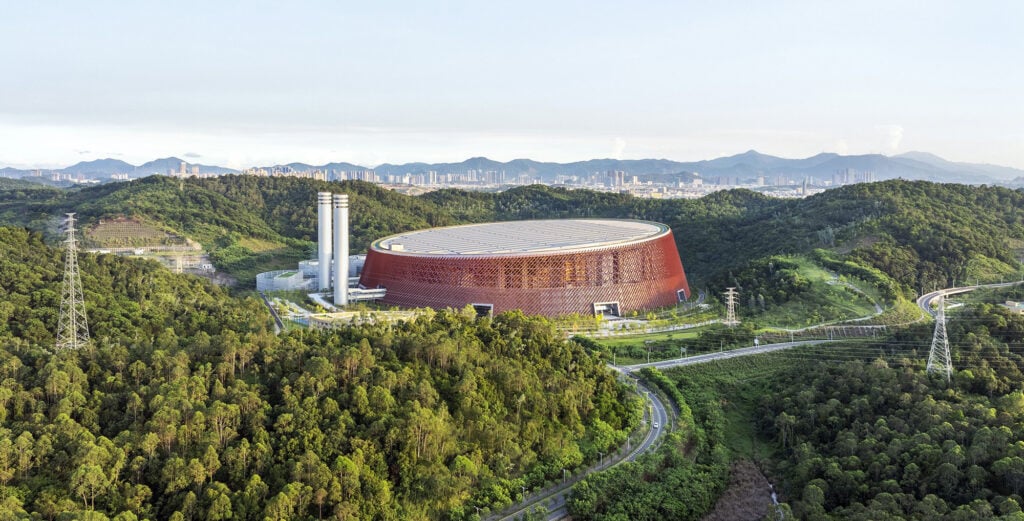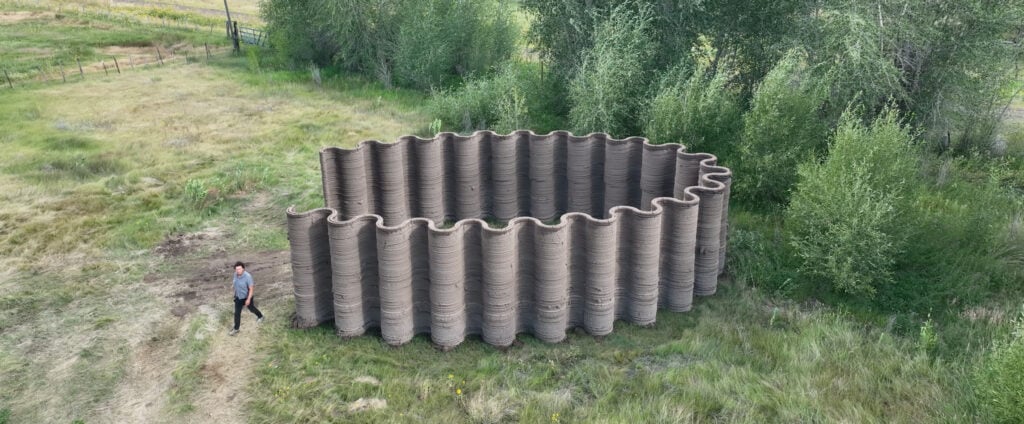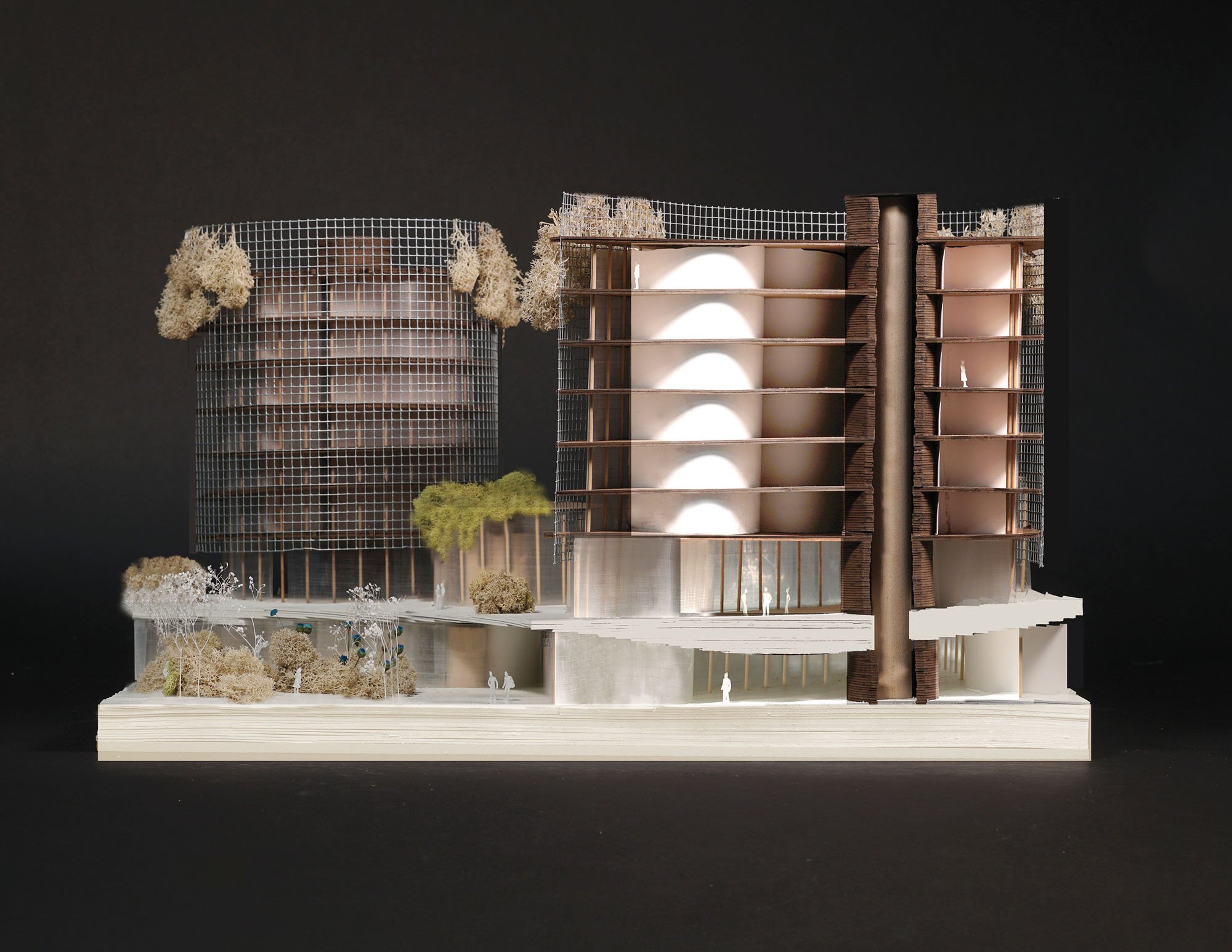
Akron, Ohio, was once called the Rubber Capital of the World, a tire mecca. But it also has a long history of coal production and a slew of abandoned mines. Lamia Albunni’s project investigated a new low-carbon process to convert a small amount of coal into graphene, a strong material used in the production of prosthetics. Extrapolating, she envisioned a research and rehab hospital in Akron, launching a regenerative next chapter for the city’s identity. COURTESY LAMIA ALBUNNI
April 12, 2023
Student Designers Practice Radical Regeneration
Ask any seasoned doctor how the human body repairs itself and they’ll admit that it is still largely a mystery. We only know how to encourage that process.
Regenerative design works in much the same way. We have developed standards, carbon calculators, and an activist movement to try to reverse the damage of global warming, but these actions only nudge nature’s healing power, which often takes time and needs more support. A group of Metropolis’s Future100 designers stand out because their portfolios show they’re wise enough to know this, and brave enough to devote themselves to creating careful, slow interventions anyway. “We’re running out of room to start fresh,” says 22-year-old Long Island, New York, native Emma Mangels. “We have to learn how to fix the problems that we’ve created ourselves.”
Emma Mangels Reimagines Rikers Island
Mangels took on one of the most continually tragic sites in North America: New York City’s Rikers Island, the site of the deadly prison built on acres of methane-belching landfill. Accepting the complicated political reality of the location, Mangels proposed a five-year phaseout of the prison’s operations, followed by a just transition of land around it to include a memorial to those who died there, affordable housing, job-training centers, and gradual land restoration engineered to suit the saltwater tidal estuary known as the East River.

Among the heinous secrets of Rikers Island is the fact that much of the prison complex rests on a gaseous landfill of New York City garbage. Emma Mangels did a deep dive on the history of the site and the prison and imagined regeneration as well as reparations. She created a plan to phase out penal operations over six years, memorials to the people who suffered on the island, and a new community of affordable housing, training centers, and community gardens—new life after decades of decay. COURTESY EMMA MANGELS
Lamia Albunni Rehabilitates Coal Country
Equally willing to attempt careful, slow change in the face of an uncertain future, Lamia Albunni considered Akron, Ohio’s historic coal mines and saw potential for literal rehabilitation in a proposed research laboratory and hospital that would embrace coal as a generative material instead of fuel. Small amounts of coal can be safely converted in-lab to graphene, a strengthening agent used in prosthetics.
With that plan in place to repurpose local resources, Albunni designed an undulating hospital with winter gardens and greenhouses for patients and staff. “I’ve always thought about how architecture tends toward generic, economic, fast structures. I’m trying to slowly understand how architecture can become more responsible for experience,” she says.
Alyssa Halloran and Minghao Du Let Nature Take Over
Alyssa Halloran and Minghao (William) Du each surveyed long-developed American cities caked in concrete and wondered if it was time to see soil again, to encourage a natural takeover. Halloran envisioned an Atlanta where original Native American trails would be re-instituted as walking paths bordered by native plants. She saw opportunities to infuse the sleek development of the past few decades with more organic building materials, from mass timber to rattan and cob, an ancient building material made of clay, sand, and straw. Du brought a fresh eye to the 20th century’s spare civic monuments such as Empire State Plaza in Albany, New York, and developed his own “softening Modernism” method of green conversion, emphasizing atria alive with public life instead of wind-whipped barrenness.

It takes a visionary to compare Albany, New York’s Empire State Plaza to the sweeping majesty of Oscar Niemeyer’s Brasília, yet Minghao Du saw not only the spare beauty but the potential to re-skin cold monuments with organic materials and public friendly atria. His proposal is a bid to transform dated and barren civic plazas across the country into vibrant community meeting grounds. COURTESY MINGHAO (WILLIAM) DU
More Ideas for Restoration through Rewilding
Mindful of unsustainable agricultural practices and potential food shortages in coming years, other student concepts fully embraced alternative farming in places long wrecked by industry. Lizzy Wilson imagined sprawling hangars at a Hong Kong airport serving as the future foundation of elaborate vertical gardening operations. Brianna Baldwin viewed the petrochemical-soaked Gulf Coast of Louisiana as something that could be restored with aquaculture. She envisioned an outdoor classroom to train young people in the potential of swampland farming, which carries an added benefit of stormwater management. Ashaykeen Abedin designed individual hydroponic gardening pods and proposed stacking them in elegant configurations throughout Japan’s densest cities, a new vertical take on community gardening and family food security.
More than one of these designers expressed nervousness at bringing their rewilding ideas to critique. They worried that the pros would see them as naive or too idealistic. But their ideas represent an unstoppable force in this cohort, a reminder that humans are made of the same genius self-healing elements as the rest of nature.
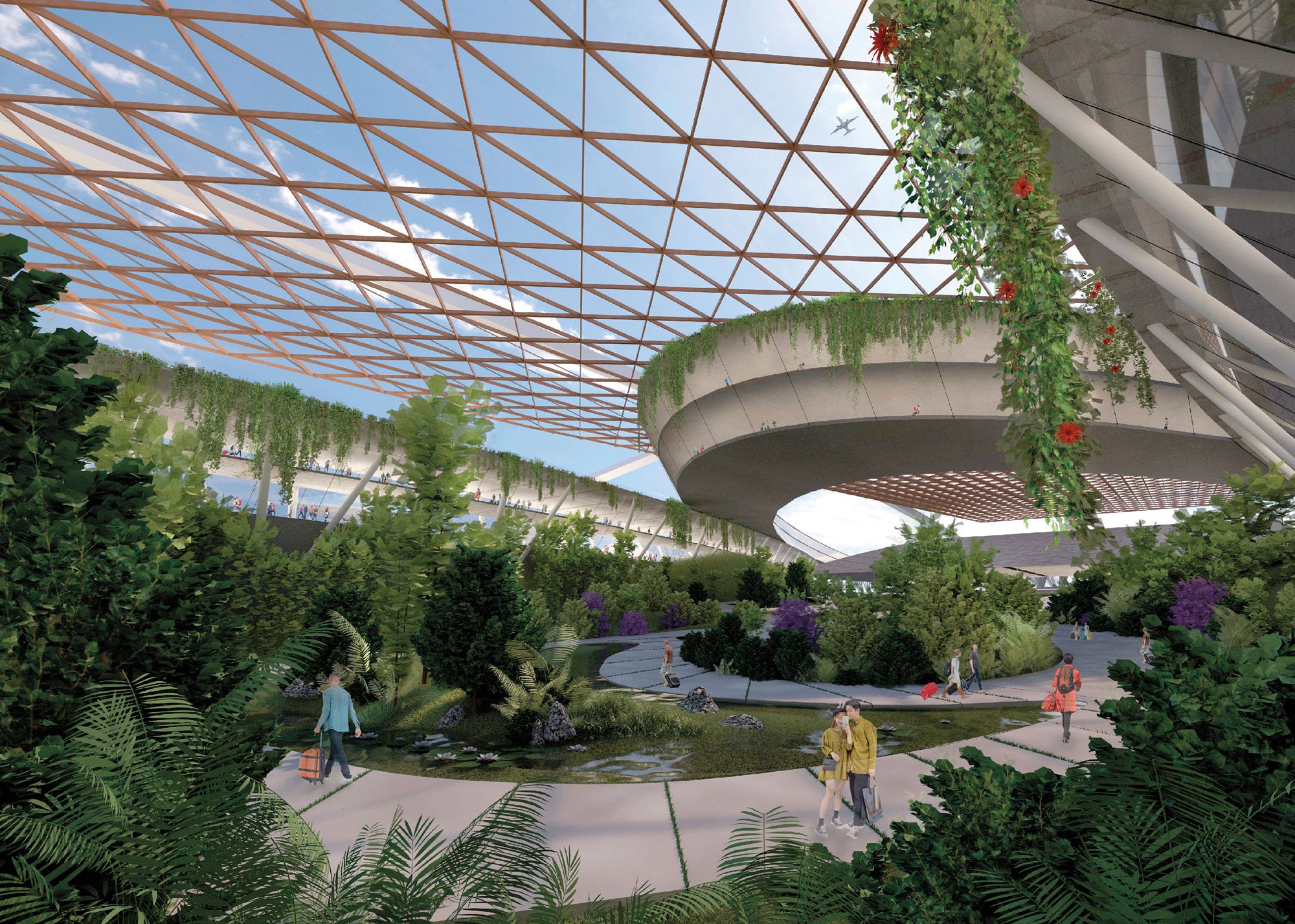
Would you like to comment on this article? Send your thoughts to: [email protected]
Related
Projects
The Shenzhen Energy Ring Sets a New Standard for Circular Infrastructure
The Perkins & Will–designed facility is a dynamic case study in placemaking, ensuring waste management and energy-generation become a more visible part of everyday life.
Profiles
Ronald Rael’s Solution to the Housing Crisis? Muddy Robots
The Berkeley, California–based architect’s new venture blends ancestral and artificial intelligence to create 3D-printed houses out of earth.
Products
B Corp Brands Are Creating Design for a Fairer World
The third-party designation is transforming design by putting people on par with profit.



